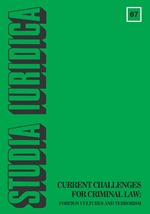
LEGAL AND POLITICAL THOUGHT OF GOTFRYD WILHEML LEIBNIZ
MYŚL PRAWNO-POLITYCZNA GOTFRYDA WILHELMA LEIBNIZA
Keywords: Leibniz Gotfryd Wilhelm; prawo; polityka; logika; characteristica universalis; Eulatus
More...
Keywords: Leibniz Gotfryd Wilhelm; prawo; polityka; logika; characteristica universalis; Eulatus
More...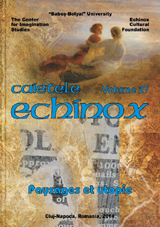
Keywords: Aristotle; Leibniz; William of Clifford; Vacuum; Cosmos; Dystopia; Utopia; Several Worlds.
Medieval scholastic commentators of his Physics excluded the vacuum from the universe. They added the idea that “Nature abhors a vacuum”. But from the middle of the thirteenth century onwards, some of them methodologically set up hypotheses secundum imaginationem (“according to imagination”) built on the existence of a vacuum. Two examples are set forth taken from two commentaries on Physics: the first (ca. 1250-1260) by the English master William of Clifford, the second, anonymous, and probably written between 1277 and 1310. Such hypotheses could lead to several issues and hence several worlds. The vacuum state turned slowly from a mere possibility to a fact in modern science. In the following we examine how Gottfried Leibniz uses many arguments of the 17th century against the Newtonians to show its metaphysical impossibility. One of his arguments is of an almost psychological nature: a vacuum would be not only inexistent, it would also be too convenient, a figment of the imagination, a kind of “pleasant story”.
More...
Keywords: first polish feature film; the earliest polish film; "Les Martyrs de la Pologne"; "Prussian Culture"; "Pruska kultura"; "Antos’ First Visit in Warsaw"; "Antos´ pierwszy raz w Warszawie"; Hendrykowski; Marek; Hendrykowska; Małgorzata; Panofsky; Walter.
The authors write about a film rediscovered by them in September 2000, in the French archive Bois d’Arcy. The film is entitled "Les Martyrs de la Pologne", but in Polish film studies is known as "Prussian Culture" ("Pruska kultura"). This discovery questioned the previously held opinion that the earliest Polish film is the "Antos’ First Visit in Warsaw" ("Antos´ pierwszy raz w Warszawie", 1908). Walter Panofsky was writing in 1907 about the "Prussian Culture". According to him it portrayed brutal resettlement of Polish peasants by Hakata and the peasant rebellion that was later viciously crushed by the Prussian army. The film ended with an apotheosis – a white eagle that appeared to Poles at prayer. According to Hendrykowskis this film was one of the first attempts of informing the world, using the medium of film, about non existent Poland and the dramatic history of Poles. The eight minute film consists of 12 episodes. The authors of the article also describe the historical context of the film, and try to answer the question: who and why made this film? And who were the target audience? They describe the context and circumstances in which the film was first shown in Warsaw in 1914, and place the film within the context of world cinema of the time, dealing with socio-political issues.
More...
The paper seeks to offer a precise answer to the question related to the character of philosophical revolutionariness. Socrates and his dialectic form of orality are emphasized, with the special attention being paid to the genesis of this discoursive form. Special attention is also paid to the Hesiodic “narrative situation,” which makes it possible to follow the course of individualization of the thinking process.
More...
Keywords: Transylvania and the banat; 1989 revolution in Romania; Caucescu regime
More...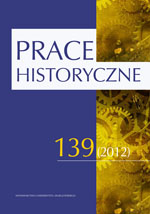
Keywords: Robel’s Katyn Files; Katyn; Polish officers; Polish Red Cross; Jan Zygmunt Robel; Robel Archive; NKWD (Soviet Intelligence Service)
In the first half of 1943 an exhumation of the bodies of Polish officers was carried out in Katyn. The objects found by the bodies and particularly those which could have some significance from the point of view of establishing the identity of the victims, such as all kinds of documents, were sent to Krakow. Subsequently at the request of the Polish Red Cross, a team of Polish experts under the supervision of Dr. Jan Zygmunt Robel carried out an examination of the so called Katyń legacy in the Chemical Branch of the local State Institute of Forensic Medicine and Criminology. Apart from the officially commissioned task aimed at identifying the victims, the team of experts from the Chemical Branch of the Institute also examined clandestinely the circumstances of death of the Polish offi cers. In the effect of these analyses, there arose a so called Robel Archive – a collection of documents containing a detailed description of the objects exhumed from the Katyn graves as well as copies of the documents found by the bodies, including all kinds of notes and memoirs. The investigation work carried out by the Polish experts was suddenly interrupted in the summer of 1944 when the Katyn legacy was transported by the Germans in the western direction and probably destroyed. However the Robel Archive avoided a similar plight. Although one of its copies fell into Soviet hands, Dr. Robel managed to successfully hide two other copies, in spite of his arrest and interrogation by the NKWD (Soviet Intelligence Service). After having been found in 1991, the materials constitute a valuable though so far little insufficiently researched historical source.
More...The explosive growth over the last two decades of neuroscience, cognitive science, and “consciousness studies” as generally conceived, remains as yet unaccompanied by a corresponding development in the establishment of an explicitly semiotic understanding of how the relations of sign exchange at the neuronal level function in the larger network of psychologically accessible sign exchange. This article attempts a preliminary foray into the establishment of just such a neurosemiotic. It takes, as its test case and as its point of departure, recent discoveries from the neurobiological research on viuso-motor transformations and on the widespread cortical phenomena of selectively tuned, single-neuron response to argue for a vision of “intersubjectivity” whereby the ens rationis arising as a function of the neuronal semiosphere may be abstracted, constructed, and shared mutually across agents.
More...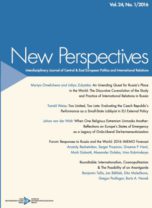
Keywords: Agamben; Nancy; Schmitt; Political Theology; Liberalism
The concern with stabilising the political and avoiding the excessive deployments of coercive force by totalitarian political imaginations is usually associated with political liberalismand liberal political theory. It is rarely associated with political theology and conceptions of sovereignty that are based on political theology. The unique contribution of the Italian philosopher Giorgio Agamben to contemporary political theory is the opportunity it offers to contemplate the stabilisation of the political in terms of political theology and not in terms of typical rule of law arguments that one would associate with political liberalism. The aim of this article is to trace and question some of the essential thoughts on the basis of which Agamben puts forward the idea of the called existence of the Christian community. It does so in order to put forward, in response, an argument for a literary community that has much in common with Agamben’s conception of the Christian ekklesia, but ultimately also differs fromit in certain important respects. The argument for a literary community that is developed ultimately has more in common with Nancy’s conception of an “inoperative community”. The article also offers a close scrutiny of Agamben’s engagement with the work of Carl Schmitt. This scrutiny of Agamben’s engagement with Schmitt is crucial for the argument that the article forwards, considering the way in which Schmitt’s work is with good reason historically linked to exactly the kind of political theology that destabilises rather than stabilises the political.
More...
Keywords: First World War; diaries; alimentation; menus;
Based on diaries written during the First World War, the article examines issues related to the procuring of food and its preparation in wartime Romania, both on the front and behind the lines, in the south of the current territory of the country, which was under German occupation between 1916 and 1918, and in Moldova, where the authorities and many people had taken refuge. While the troops and the common population were faced with an extreme scarcity of resources, the upper classes and upper-ranked officers, as well as the occupation forces, on the one hand, and the French and British allied ones, on the other, were still able to enjoy rich and indulgent meals. The selected written accounts reveal a striking difference between the available foodstuff and between the menus of the former and the latter categories.
More...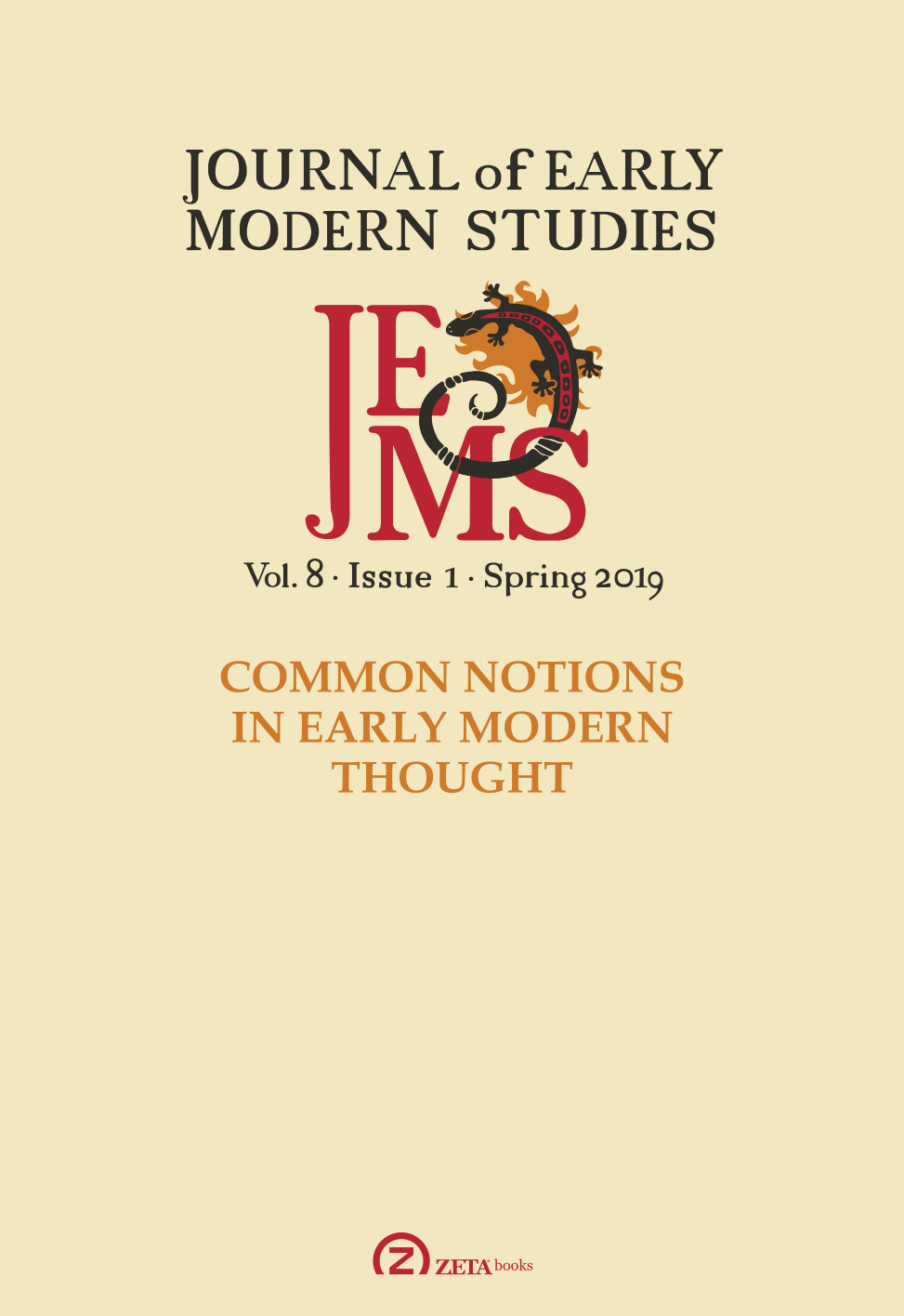
Keywords: Common notions; innateness; instincts; practical reasoning; pleasure; Leibniz;
In his defense of innateness in New Essays on Human Understanding (1704), Leibniz attributes innateness to concepts and principles which do not originate from the senses rather than to the ideas that we are born with. He argues that the innate concepts and principles can be known in two ways: through reason or natural light (necessary truths), and through instincts (other innate truths and principles). In this paper I will show how theoretical and moral reasoning differ from each other in Leibniz, and compare moral reasoning and instincts as sources of knowledge in his practical philosophy. As the practical instincts are closely related to pleasure and passions, which are by nature cognitive, my emphasis will be on the affective character of instinctive moral action and especially deliberation which leads to moral action. I will argue that inclinations arising from moral instinct, which lead us to pleasure while avoiding sorrow, can direct our moral action and sometimes anticipate reasoning when conclusions are not readily available. Acting by will, which is related to moral reasoning, and acting by instincts can lead us to the same moral knowledge independently, but they can also complement each other. To illustrate the two alternative ways to reach moral knowledge, I will discuss the case of happiness, which is the goal of all human moral action for Leibniz.
More...Keywords: Leibniz; affect; automation; reasoning; working papers; medium; material; practices;
On ten loose handwritten folios dating back from April 1679, Leibniz gradually devised, in the course of three days, a full-blown theory of thought that nonetheless remained unpublished and still has received little attention from scholars. Conceiving of affectūs as the driving forces that set the mind in motion from one thought to another and passiones as the inertia opposing such movement, this manuscript results in a systematic psychology understood as a dynamics of thoughts modelled on the mechanical laws of motion for solid bodies. Delving into Leibniz‘s working papers to witness the unfolding of his thoughts, I propose to pay attention to the many intellectual operations that paved the way for his metaphysics. From his reading notes on Descartes to his syllogistically redefining a set of concepts and propositions, Leibniz here defines an affective theory of cognition and sets the first foundations of a combinatorial ontology: his socalled scientia generalis. Focusing on the material practices that govern his use of paper, I would like to show that Leibniz‘s conceptual mechanization of cognition is materially dependent on a practical automation of reasoning reduced to a propositional calculus on paper. Eventually, this contribution is a plea for a media-historical reading of Leibniz‘s working papers.
More...
Keywords: Spinoza; Leibniz; Duns Scotus; conatus; force; metaphysics of being; late scholasticism
The purpose of this paper is to show that conatus is not just one of the many philosophical terms discussed at the beginning of the modern era: it is not intended to highlight one of the many attributes inherent in natural objects, but concerns the most fundamental meaning of being. In addressing this phenomenon, Spinoza and Leibniz propose new definitions of the notion of being in terms of inner dynamism. According to this approach, whatever exists, realizes its own possibilities, counteracting all alternative pretensions to existence. I maintain that this thesis represents a real turning point in the history of modern metaphysics. It can best be understood against the backdrop of at least three different historical and intellectual contexts. The first one is centered upon the problem of dynamism discussed in the physical sciences of nature. The second context is that of the Platonic tradition which occupies an important place in the thought of Leibniz. The third has to do with how the traditional metaphysics was transformed by Duns Scotus and his followers during baroque scolasticism. It will be argued that the first two perspectives, well known to early modern scholars, fail to make sense of Spinoza’s and Leibniz’s attempts to reformulate the notion of the being in terms of force and effort (conatus).
More...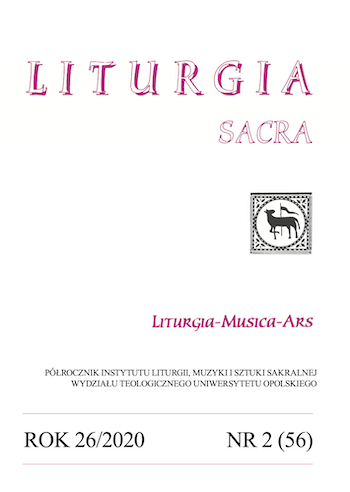
Keywords: mistyka oblubieńcza; idea duchowego pijaństwa; Pieśń nad Pieśniami; emblematyka; protestantyzm; nowożytna sztuka kościelna;
Wzrastające znaczenie mistyki oblubieńczej – jedna z ważniejszych tendencji w pobożności luterańskiej XVII w. – znalazło swój wyraz w konceptach emblematycznych, zarówno w księgach, jak i w przestrzeni kościelnej. Koncepty te były przekształcane w celu wyrażenia określonych idei teologicznych związanych z Pieśnią nad Pieśniami. Przedmiotem studium jest obszerny program empory południowej kościoła w Steinhagen pod Stralsundem (ok. 1670–1680), zainspirowany emblematami Philippa Georga Harsdörffera w dziele norymberskiego pastora Johanna Michaela Dilherra Göttliche Liebesflamme (1651), wykazujący jednak nieznaczną modyfikację niektórych cytatów biblijnych w celu zaakcentowania określonych treści. Teologiczne centrum programu stanowi idea duchowego pijaństwa, znana m.in. z literatury średniowiecznej. Została ona zwizualizowana przy pomocy pictura z księgi Emblemata nova Andreasa Friedricha (1617), poddanego modyfikacji w duchu wizji mistycznych. Ten wysoce indywidualny przykład wskazuje na silny wpływ nauk Johanna Arndta – jednego z czołowych przedstawicieli tzw. pobożności serdecznej (Herzfrömmigkeit).
More...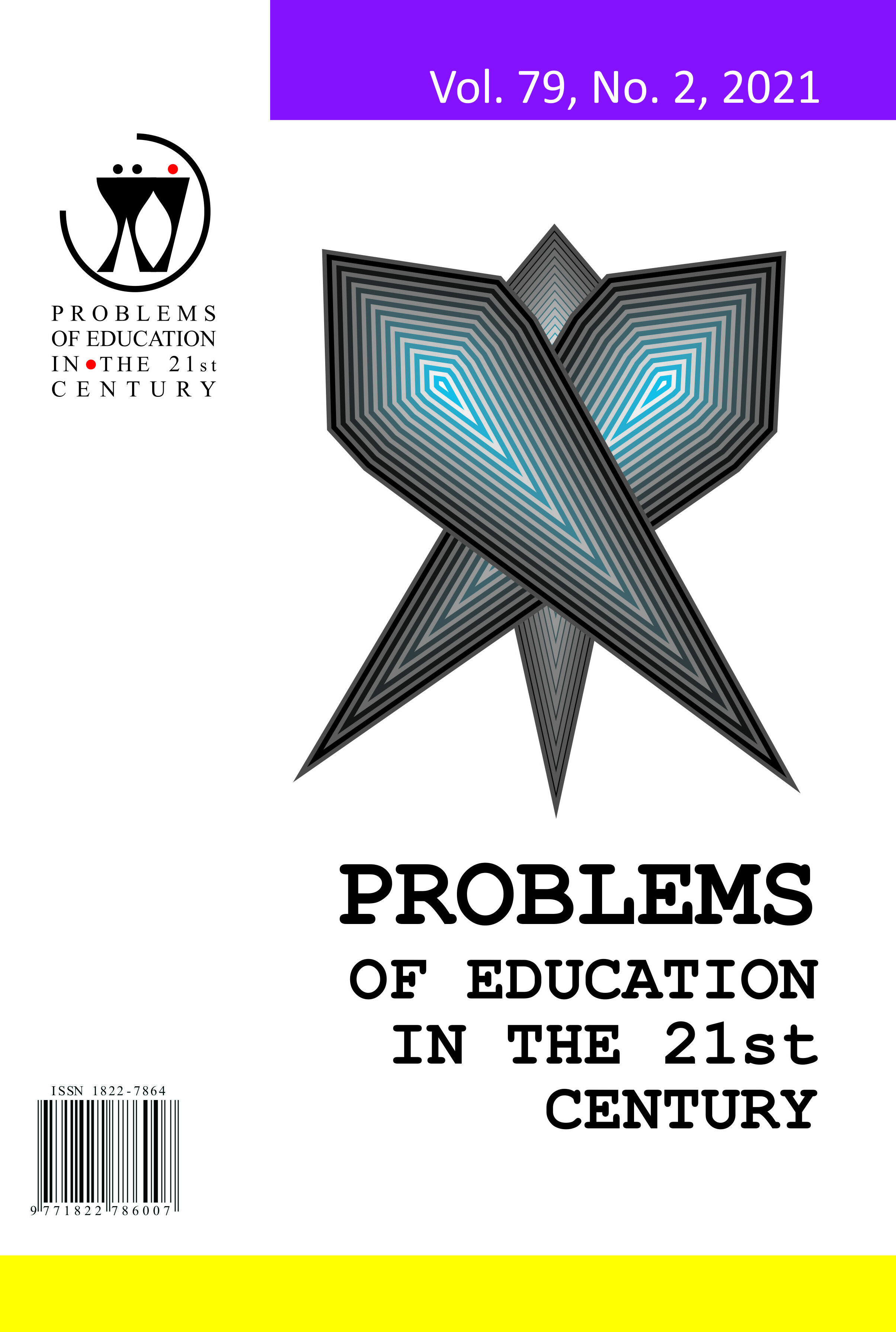
Keywords: active learning; digitalization of education; e-learning; flipped classroom;
Few teaching concepts have received as much attention in recent years as the Flipped Classroom (FC). This is clearly linked to media attention on the concept, which is currently being intensified by the Corona pandemic. In this research, the media rise of the concept is explained and the discrepancy between popularity and empirically validated research results is clarified. While the literature basis for the FC has grown enormously over the last decade, reviews and initial meta-analyses have shown, through their filter criteria, that not many of studies can meet scientific standards. The comparison of individual studies is particularly difficult, because there is no uniformly accepted framework and no uniform definition of the concept. For this reason, one of the goals of this research was to give an overview of the variety of FC definitions, discuss its most controversial characteristics, and to provide the key elements for a definition of the FC. A comparison of selected studies and reviews shows an assessment of the effectiveness of the teaching concept. The findings shed light on potential problems and challenges, and provide directions for future research.
More...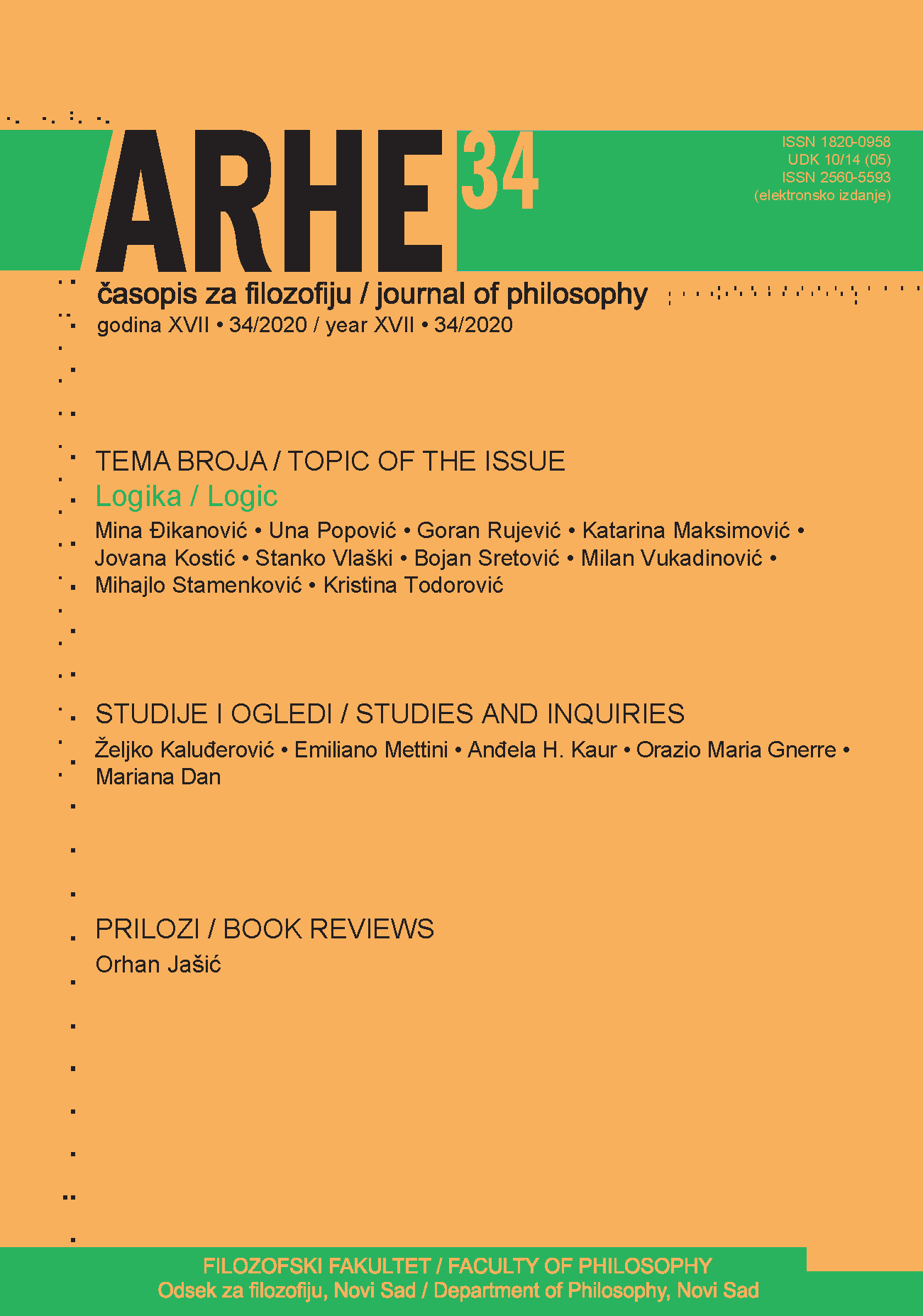
Keywords: I. Kant;ethics;religion;S. Žižek;C. G. Jung;Job;Dostoevsky;
Kantian ethics and concept concerning “radical evil” represent one of the most interesting facets of moral reflection of German philosopher. Using anthropological and philosophical approach based on well-known critical method, I. Kant tried to find a comprise between “natural” behavior (i.e. not regulated by synthetic a priori judgments) but based only on sensation of pleasant unpleasant and “rational” behavior when humans tried to exit the realm of appearance and personal egoism for entering a new ethical dimension based on right (not pathological, if using I. Kant’s word) maxims being able to make human beings better than they are. In the paper it is underscored that main goal of Kantian ethics is the creation of a community where religion is a fact of reason and not of faith and reason, having as main actors men reaching an high level of self-consciousness and virtue that I. Kant granted as the greatest happiness one can have. The author tried to highlight the passage from “human being” as individuum (representative of a species) to ethically autonomous member of social consortium using as sources different Kantian works where this problem has been studied deeply and gave great emphasis to story of Job, representing in the best way the passage the Author wrote of. At the same time, he set for himself the goal of exploring progressive character of Kantian ethics aimed at making human beings better than they are, but not the best, considering noumenic nature of ethics hidden in the “Realm of goals”. Given such assumptions, the Author leads a debate with scholars distorting Kantian ethical thought by interpretation from Lacanian standpoints so that those scholars made I. Kant original source of totalitarianisms, where, in scholars’ opinion, humans do their duty both for saving their lives and express their sadistic tendencies and makes clear that Kantian ethics, throughout contradictory and complicated, is oriented to correction and education of human behavior for saving humans being from their own passions.
More...
Keywords: Martin Luther; Johann Sebastian Bach; Protestant choir; death; resurrection;
One of the focal points of Martin Luther’s work as a reformer can still be discovered in his compositions. He wrote several lyrics in which he formulated essential dogmatic insights. These include the Easter song Christ lag in Todesbanden [Christ Lay in the Bonds of Death] based on the mediaeval Gregorian chant Victimae paschali laudes and its later version Christ ist erstanden, in which not only the joy over Easter and the resurrection of Christ can be found, but it also gives a picture of the reformer’s theological insights into the death of death and sin. After nearly two hundred years, Johann Sebastian Bach processes all seven verses of Luther’s song in his cantata of the same title (BWV 4), shortly after the death of his first wife. The Lutheran hymn of the resurrection will thus become a personal creed, an ars poetica, but at the same time we can find an exciting musical representation of Luther’s theological view of death in Bach’s composition.
More...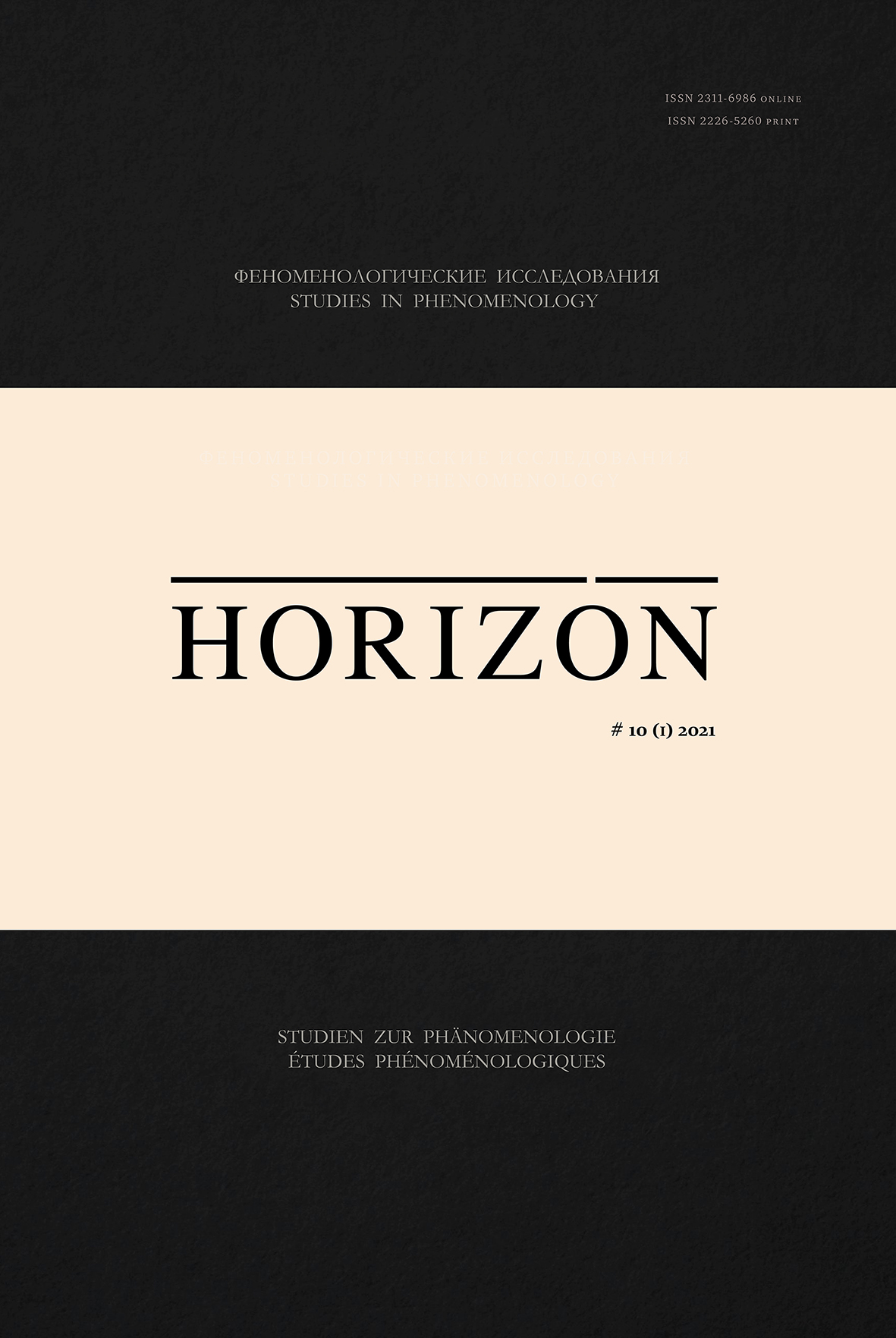
Keywords: phenomenology in Latvia; Husserl; Celms; Stavenhagen; Ladusāns; Motroshilova; Mamar- dashvili; Riga Phenomenological Circle; Tymieniecka; critical realism; cognition phenomenology; eco-phenomenology.
Looking over a hundred years, it should be acknowledged that phenomenological studies in Latvia were initially carried out in the twenties and thirties of the 20th century, starting with 1) Husserl’s studies and criticism of solipsism (T.Celms), 2) phenomenological analysis of forms of community (K. Stavenhagen), and 3) development of cognitive phenomenology in Ladusāns’ many-sided gnoseology. It was not possible to work on phenomenology during the harsher years of the Soviet regime (1945–1970), but in the mid-1970s, a phenomenological circle emerged in Riga under the influence of Nelly Motroshilova and Merab Mamardashvili. Its focus was on the issues of consciousness and language, on phenomenological ontology, communication, time-consciousness. Since 1990, phenomenological studies have been expanding, four international conferences have been held in Latvia in cooperation with the World Phenomenology Institute, nine monographs on phenomenology have been published, and 56 articles from Latvia have been published in Analecta Husserliana. Themes of papers and presentations included historicity, space and time, passions, teleology, educational philosophy, aesthetics. Since 2005, nine phenomenology-related doctoral theses have been defended in Riga. Over the last decade, greater focus has been given to applied phenomenology, its relationships with medicine, social media, violence research. Phenomenologists influenced a transformation of classical philosophy towards wider horizons and reflected the necessity to consider concepts of life, nature, body, we-consciousness, it also opened the way for contemporary perspective dialogue with cognitive sciences, linguistics, identity studies and psychoanalysis.
More...Keywords: children's language; communication competence; courtesy; official register; familial register; courtesy markers; language acquisition;
The article discusses the acquisition of politeness marked among Lithuanian children aged 3 to 7. It analyses children’s ability to use different registers and politeness markers, i.e., politeness phrases, address forms, and requests, based on a social situation. The aim of the research is to investigate the expression of politeness markers of the Lithuanian children aged 3 to 7 in different social situations and to discuss their ability to use registers on different levels of formality. The hypothesis has been proposed that the children aged 3 to 4 years have already acquired sufficient communicative competence to use different politeness markers and registers. The research data consists of a corpus (~ 30,000 words) of conversations of similar age children recorded in role-plays and represents formal and informal linguistic situations. The language of 77 children has been recorded. The main findings of the research support the hypothesis: depending on the game situation, the children used formal/informal greetings/ sayings goodbye and other politeness phrases, formal/informal address forms. The features of stylistic variation and tendency for children to use direct requests in both formal and informal social situations are also discussed in the analysis of conversations.
More...
Keywords: eating disorders; food addiction; impulsivity; personality; substance use
Background and aims. Food addiction (FA) and substance use (SU) have frequently been reported in patients with eating disorders (EDs). Our study aimed to assess the prevalence rates of FA and/or lifetime problematic alcohol and illicit drug use among patients with specific ED, such as: bulimia nervosa (BN), binge eating disorder (BED), and other specified feeding and eating disorder (OSFED). We sought to identify clinical, psychopathological, and personality profiles involved in these addictive behavior-based phenotypes. Methods. The total sample was 527 patients (176 BN, 115 BED, and 236 OSFED). FA was assessed through the Yale Food Addiction Scale 2.0. To determine lifetime SU, a semi-structured clinical interview was carried out. Results. Patients with BN had the highest rates of FA both with and without SU. No gender differences were obtained for the prevalence of current FA and/or lifetime SU. Patients reporting at least one addictive-related behavior exhibited increased clinical severity compared to those who reported none. Increased impulsivity (such as high lack of premeditation, sensation seeking, and positive urgency) and low self-directedness were differentiating factors for presenting one or two addictive behaviors Discussion and Conclusions. Overall, patients presenting with at least one addictive-like behavior reported a poorer clinical status than those without. Also, patients with FA and SU exhibited a more dysfunctional profile characterized by high impulsivity and low self-directedness. These findings would support the need for targeted treatments to reduce impulsivity and increase self-directedness, especially in patients with any addictive-related behavior, as a step towards improving their treatment outcome.
More...